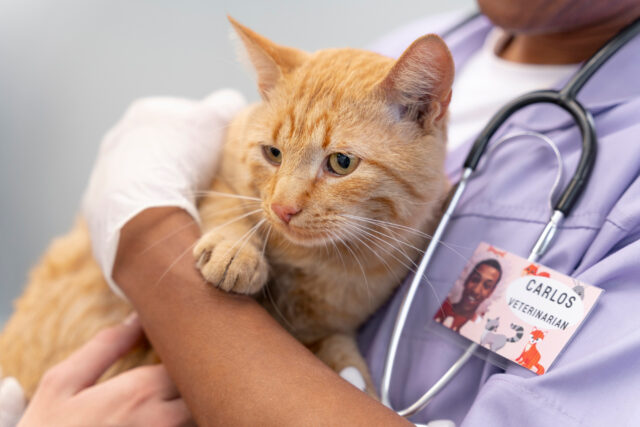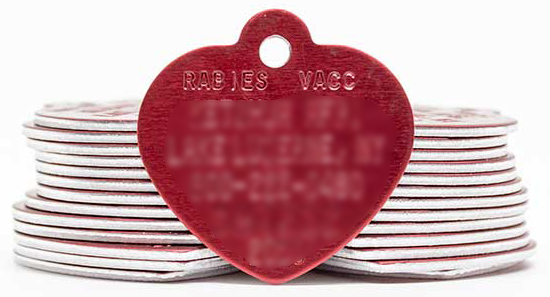The Importance of Rabies Shots
and Understanding Rabies Suspicions
As pet owners, ensuring the health and safety of our furry companions is  paramount. Among the various preventive measures, one stands out as crucial: rabies vaccination. Rabies is a deadly viral disease that affects mammals, including humans, and vaccination remains the most effective way to prevent its spread. In this article, we’ll delve into the significance of rabies shots for pets and shed light on what happens when an animal is suspected of rabies.
paramount. Among the various preventive measures, one stands out as crucial: rabies vaccination. Rabies is a deadly viral disease that affects mammals, including humans, and vaccination remains the most effective way to prevent its spread. In this article, we’ll delve into the significance of rabies shots for pets and shed light on what happens when an animal is suspected of rabies.
Understanding Rabies:
Rabies is a viral disease transmitted through the saliva of infected animals, most commonly through bites. The virus attacks the central nervous system, leading to severe neurological symptoms and ultimately death if left untreated. While rabies is rare in properly vaccinated pets in many countries, it remains a serious public health concern worldwide.
The Importance of Rabies Shots for Pets:
- Prevention: Vaccinating pets against rabies is the most effective way to prevent the disease. Vaccination not only protects individual pets but also helps prevent the spread of rabies within communities.
- Legal Requirement: In many regions, rabies vaccination is a legal requirement for pet ownership. Pet owners may be required to provide proof of rabies vaccination when licensing their pets or traveling across borders.
- Public Health: Rabies is a zoonotic disease, meaning it can be transmitted from animals to humans. Vaccinating pets helps protect not only the animals themselves but also their human caregivers and the wider community from the risk of rabies transmission.
What Happens When an Animal is Suspected of Rabies:
When an animal is suspected of rabies, authorities take swift action to protect public health and safety. The following steps are typically taken:
- Quarantine: Suspected rabid animals are often placed in quarantine to prevent potential exposure to other animals and humans. Quarantine periods may vary depending on local regulations and the circumstances of the suspected case.

- Observation: During quarantine, the animal is closely observed for signs of rabies. These may include changes in behavior, excessive salivation, aggression, and paralysis. Veterinary professionals monitor the animal’s condition and may perform diagnostic tests to confirm the presence of the virus.
- Testing: If rabies is suspected, diagnostic tests such as the direct fluorescent antibody test (DFA) or polymerase chain reaction (PCR) are performed on samples of brain tissue to confirm the diagnosis. These tests are conducted in specialized laboratories under strict protocols.
- Public Health Measures: In cases where rabies is confirmed or strongly suspected, public health authorities may implement measures to assess and mitigate the risk of rabies transmission to humans. This may include notifying individuals who may have been exposed to the rabid animal and recommending post-exposure prophylaxis (PEP) treatment as necessary.
Rabies vaccination is a vital component of responsible pet ownership, protecting both pets and humans from the deadly consequences of this viral disease. By ensuring that our pets are up-to-date on their rabies shots, we contribute to the collective effort to prevent the spread of rabies and safeguard public health. In cases where rabies is suspected, prompt action and collaboration between pet owners, veterinary professionals, and public health authorities are essential to mitigate the risk and protect the community. Together, we can work towards a world where rabies is no longer a threat to pets or humans.
Read on to understand just what happens to an animal during testing for rabies.
Understanding Rabies Testing:
The Process of Animal Euthanasia for Rabies Diagnosis
Rabies is a deadly viral disease that affects mammals, including humans,  and timely diagnosis is crucial for effective treatment and prevention. In cases where an animal is suspected of having rabies, euthanasia and subsequent testing of brain tissue are necessary steps to confirm the diagnosis. While this process is essential for public health and safety, it is also emotionally challenging for pet owners and veterinary professionals alike. In this article, we’ll delve into the detailed process of how an animal is euthanized and tested for rabies, shedding light on the procedures involved and the importance of this diagnostic approach.
and timely diagnosis is crucial for effective treatment and prevention. In cases where an animal is suspected of having rabies, euthanasia and subsequent testing of brain tissue are necessary steps to confirm the diagnosis. While this process is essential for public health and safety, it is also emotionally challenging for pet owners and veterinary professionals alike. In this article, we’ll delve into the detailed process of how an animal is euthanized and tested for rabies, shedding light on the procedures involved and the importance of this diagnostic approach.
The Importance of Rabies Testing:
Rabies is a zoonotic disease, meaning it can be transmitted from animals to humans, primarily through bites or scratches. Timely diagnosis and treatment are essential to prevent the spread of the virus and  ensure effective medical intervention for individuals exposed to rabid animals. Rabies testing plays a critical role in confirming the presence of the virus in suspected cases, guiding public health measures, and protecting both animal and human populations from the risk of rabies transmission.
ensure effective medical intervention for individuals exposed to rabid animals. Rabies testing plays a critical role in confirming the presence of the virus in suspected cases, guiding public health measures, and protecting both animal and human populations from the risk of rabies transmission.
The Process of Animal Euthanasia for Rabies Testing:
- Suspected Case Identification: Animal control officers, veterinary professionals, or public health authorities may identify an animal as a suspected rabies case based on observed symptoms, behavior, or exposure history. Common signs of rabies in animals include changes in behavior, excessive salivation, aggression, and paralysis.
- Consultation and Consent: In cases where an animal is suspected of having rabies, veterinary professionals will consult with the animal’s owner or caregiver to discuss the necessity of euthanasia and rabies testing. Informed consent is obtained from the owner before proceeding with the procedure.
- Euthanasia Procedure: Euthanasia, or humane euthanasia, is the process of painlessly ending an animal’s life to prevent suffering. Veterinary professionals perform euthanasia using approved methods, such as intravenous injection of euthanasia solution or inhalation of carbon dioxide gas. The chosen method may vary depending on factors such as the species, size, and health status of the animal.
- Collection of Brain Tissue: After euthanasia, veterinary professionals collect samples of brain tissue from the animal for rabies testing. The preferred site for sample collection is the brainstem, as this region has a high concentration of the rabies virus. The tissue samples are preserved and transported to a specialized laboratory for testing.

- Laboratory Testing: In the laboratory, the collected brain tissue samples undergo diagnostic tests to detect the presence of the rabies virus. The most common test used for rabies diagnosis is the direct fluorescent antibody test (DFA), which involves staining the tissue samples with fluorescent antibodies specific to the rabies virus. Positive test results indicate the presence of the virus in the animal’s brain tissue.
- Reporting and Public Health Measures: Upon confirmation of rabies diagnosis, public health authorities take appropriate measures to assess and mitigate the risk of rabies transmission to humans and other animals. This may include notifying individuals who may have been exposed to the rabid animal and recommending post-exposure prophylaxis (PEP) treatment as necessary.
Conclusion:
The process of euthanizing and testing animals for rabies is a necessary but emotionally challenging aspect of rabies control and prevention efforts. By promptly identifying and confirming suspected cases of rabies, veterinary professionals and public health authorities can implement measures to protect both animal and human populations from the risk of rabies transmission. While the process may be difficult for pet owners and veterinary professionals alike, it plays a crucial role in safeguarding public health and safety and preventing the spread of this deadly viral disease.


